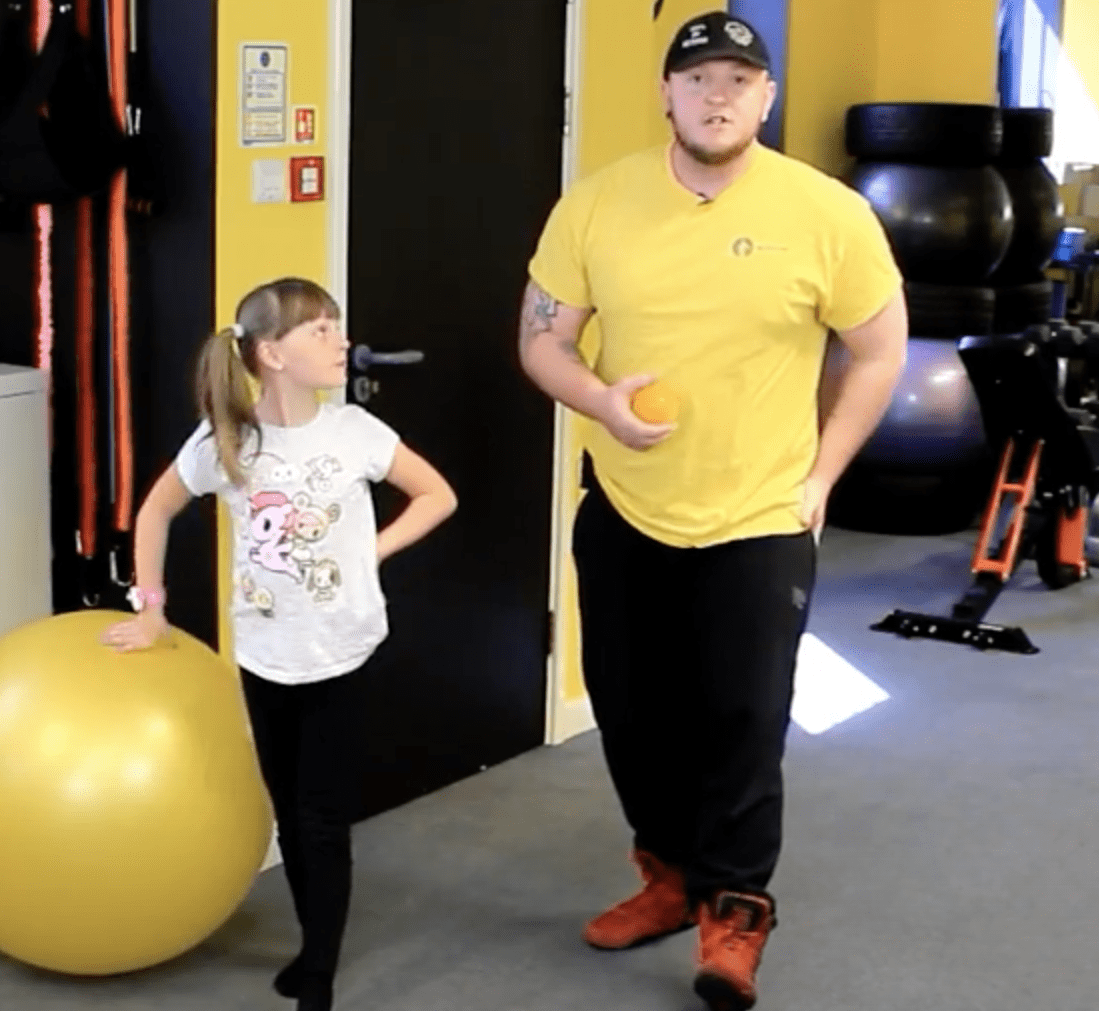- Exercise Tips for Hypermobility - 24 July 2024
- Creatine Benefits for Hypermobility and EDS - 21 July 2024
- Low-Dose Naltrexone For Fibromyalgia - 29 May 2024
This article covers:
ToggleHypermobility and children
In recent years the medical world has begun to realise that the prevalence of hypermobility is far greater than it was once thought to be. Therefore, it has never been a better time to focus on specific hypermobility exercises for children. This helps them to increase their joint stability, motor skills, and to help them traverse the many hormonal changes that puberty brings that can often make hypermobility worse. There are lots to cover when it comes to exercises and hypermobile children, let us cover each area
Why we should be focusing on exercises for Hypermobile children
Joint hypermobility can cause many issues for our children, this is why it’s important that we address these issues when they are young, as their brains are more plastic. This means that by focusing on addressing areas that may cause issues in the future, we can help to mitigate a lot of potential future distress for our children. In the following section let us take a look at some of the issues that children with hypermobility may face.
Motor development in hypermobility
It is thought that delayed motor development is present in approximately one-third of children with generalised joint hypermobility. However, there is no association between the degree of hypermobility and delay in motor development. From various studies looking at physical therapy and exercises for children with hypermobility, It does appear that consistent, monthly, physiotherapy, combined with a home treatment protocol implemented by primary caregivers, is sufficient to achieve motor catch-up. It is important that we focus on coordination and motor skills with our children, as it can reduce the risk of trips and falls that may cause joints to subluxate/dislocate.
Anxiety and Hypermobility
In recent years, a strong correlation between hypermobility and anxiety has been established. Whilst the exact mechanisms remain unknown, one thing is for sure, children with hypermobility have a higher frequency of anxiety disorders and a higher intensity of physiological anxiety. Exercise can be a powerful tool for children with anxiety, as exercise activates frontal regions of the brain responsible for executive function, which helps control the amygdala, our innate reacting system to real or imagined threats to our survival. As well as benefits to executive functions, exercise also helps to get the heart rate up. This changes brain chemistry, increasing the availability of important anti-anxiety neurochemicals, including serotonin, gamma-aminobutyric acid (GABA), brain-derived neurotrophic factor (BDNF), and endocannabinoids.
Joint subluxations/dislocations in children
As mentioned previously, children with connective tissue laxity are susceptible to joint subluxations and dislocation. Whilst joint dislocations can be very distressing to anyone, no matter their age, they can be a lot more distressing for children. Adults with hypermobility tend to develop certain coping skills that help to aid them with joint dislocations, whereas children have not had time to do the same. This means that dislocations can be incredibly distressing for children with hypermobility.
What is the best exercise for hypermobile children?
Exercises that promote unilateral loading, proprioception, and of course strengthening and stability will be the best exercises for children with hypermobility. Depending on the age of your child, different forms of exercise may be better than others.
Hypermobility exercises for small children
For children up to the age of 10 years old, you may experience difficulties in following a solid exercise programme. Especially, if young children do not fully grasp the importance of doing their hypermobility exercises. Setting aside time for specific exercises can often be a challenge in itself, never mind the actual exercises! And given the prevalence of technology in hypermobile children’s lives these days, children get bored far quicker than they used to.
Children often have a hard time with hypermobility, with a lot of their complaints getting pushed aside and put down to “growing pains” by doctors not educated around hypermobility. They may even have had negative experiences around exercises in the past from various people, and there may be a lot of anxiety around exercises. With the odds stacked against us, where can we start with exercises to make them more accessible for small children?
Well, there are 3 main points we can focus on:
- We can modify exercises to make them into fun and engaging games that focus on strength, stability, and motor skills.
- We can use the time for bonding by doing the exercises with them.
- We can help to reframe the narrative around exercises.
Not all exercises need to be rigorous, boring, and a downright chore to do. Children love games, we all know this, and there is no reason why you can’t use games to implement your hypermobility exercises. One of our favourite lower-body stability games can be found in the video below. It’s a great game in general, but also with a little bit of competition thrown in, combined with a good closed chain stability exercise that targets the hips, knees, and ankles.
We can also use this time to bond with our children, making the experience far less daunting. “How do I do this?” I hear you ask. Simply by doing them with the child. If you can make the exercises into a game, then all the better. Remember, pain is a biopsychosocial experience, and its mediated and created by those three factors. Never underestimate the power of the social bubble when it comes to pain or hypermobility. A good exercise game not only strengthens social connections, and breaks down fears around exercises, but it also releases pain-killing chemicals within the body.
Lastly, get used to reframing the surrounding narrative during exercises. No child wants to feel pressured into their hypermobility exercises. So, make sure your child associates doing their exercises as a good, fun, family, activity, rather than a boring chore.
Hypermobility exercises for Teenagers
Implementing hypermobility exercises and rehab movements with teenagers will be far easier than exercising with small children. By now, teenagers can appreciate how important physio and exercises are in relation to their general health. Therefore, teenagers will not need as much motivation to complete the exercises.
With hypermobility exercises and teenagers comes the ability to incorporate more complex and more effective movements. Rather than focusing on games, we can focus more on repetitions, time under tension, and sets of exercises. Focusing on these allows us to log progress over the weeks, ensuring that our hypermobile children are progressing and adapting to the increasing load.
Exercises for teenagers should focus on:
- Updating their cortical maps, helping their brains coordinate sensation and movement together, to better help locate and stabilise their joints, as well as reducing the risk of trips and falls.
- Load and muscle tone, helping them to be able to use their muscle tissues for longer without fatigue.
- Functional integration which allows them to move their joints in the correct way, resulting in proper movement patterns that use correct motor control, without using the laxity of the tissue.
Again, exercise and rehab for those with hypermobility need not be boring. After all, they do say variety is the spice of life. So, when exercising with your teenager, again make it fun and rewarding. Teenagers are dopamine machines, you need only to look at how happy they are when their social media posts get likes to see this. So, take advantage of their brain chemistry and make rehab and exercise rewarding.
Focusing on using tactile cues to help your teenager’s brain connect to their joints, will allow them to work the joint far more safely than without them. A tactile cue involves providing the somatosensory brain map with immediate information, allowing the brain to recruit more muscle fibres than it normally could. We at The Fibro Guy have created many cortical mapping techniques that help to stabilise hypermobile joints fairly quickly. Tactile cues are a basic and easy way to help update that cortical map. However, more advanced techniques will need to be used to gain the results that you see on our success stories page. Below you can find a suitable hypermobility exercise for teenagers, which is focused around stabilising the knee joint.
As well as focusing on cortical mappings, it’s also important that you incorporate load and stability into your child’s exercise routine. Whilst certain exercises like swimming can be beneficial at helping to increase our heart rate, the lack of load in the water does not do a great deal in terms of hypermobility rehab. Rehab should be focused on movements that are actually transferable to everyday life. Therefore, any exercises that are unilateral (performed on one side) are going to transfer to everyday movement very well. Helping your teenager to build strength and stability on one leg at a time, helps to translate strength and stability into areas such as walking.
In the video below, you can find one such exercise.
Lastly, a major area that you should be focused on when it comes to exercises for children with hypermobility, is Functional Integration. This is where we focus on them using the joints in the correct way. One area that often needs work is the shoulders, as long durations at school desks and inactivity often causes slumping and low use of the shoulders. Many hypermobile teenagers often complain of should pain and dislocations, and more often than not, actual shoulder exercises yield no results. Most often in the studio, we find that unless a shoulder has a direct impact on it, it is often not the real issue, but rather the symptom. Many times if a person cannot actively engage their shoulder blade, it leaves the joint wide up to slips and dislocations.
You can find a video about this below.
How much exercise?
A recent meta-analysis in the journal Anxiety-Depression found that people with anxiety disorders who reported high-level physical activity were better protected against developing anxiety symptoms than those who reported low physical activity. However, there are other factors that we need to consider when focusing on exercises for our hypermobile children.
Too much exercise, too soon, can lead to severely delayed onset muscle soreness. If a child is not used to this, it will most definitely be distressing. It’s likely that your child will also be at school, so if severe DOMS are present, it may affect their ability to concentrate on their school work. However, a good, solid routine, established and adhered to in a consistent manner, will allow a slow adaptive load response and better results.
So with all of that being said, focusing on an exercise routine twice a week will allow enough load and consistency to get results, without placing too much strain and demand on a child’s body. The important thing when it comes to exercises for hypermobile children is to just get started. Sessions don’t need to be long; they just need to be consistent.
We hope you have enjoyed our article about children with hypermobility and exercise, and please feel free to check out our hypermobility resource page.
— The Fibro Guy Team —





